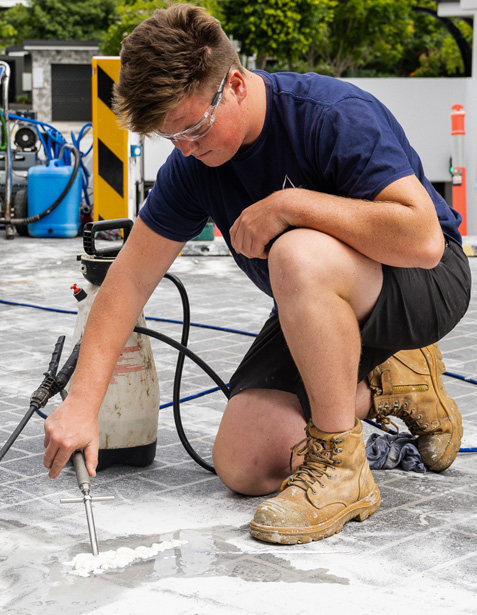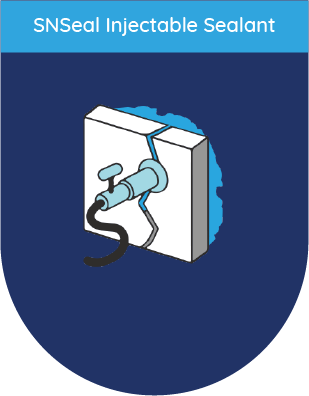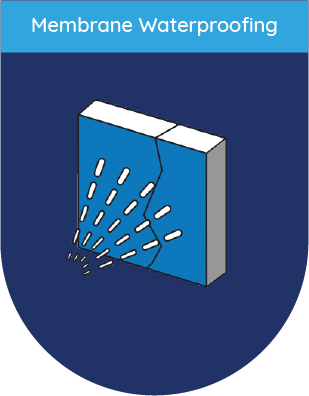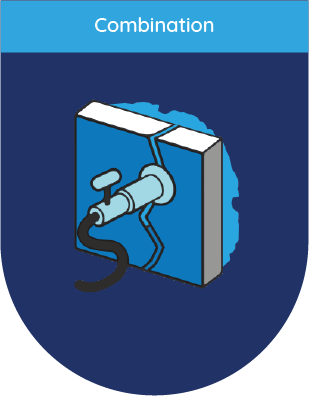Leading Water Ingress and Waterproofing Experts in Australia
At Stop & Seal, we’re committed to providing the highest quality waterproofing Australia has to offer. Our team of waterproofing technicians deliver comprehensive water ingress solutions for both residential and commercial properties nationwide.
Clients who trust us








Why Choose Us for Your Waterproofing Australia Needs?
Nationwide Waterproofing Expertise
Nationwide waterproofing expertise across all Australian climate zones and building types
Certified Australia waterproofing specialists
Certified Australia waterproofing specialists with extensive training and hands-on experience
Expert Solutions
New construction projects or remedial works regardless of the construction stage, we offer safe, lasting solutions.
Customised Waterproofing Approaches
Customised waterproofing approaches tailored to your specific property challenges
Revolutionary Injectable Product
Resolves water ingress issues by penetrating the leak source to STOP water flow and create an airtight and water-tight SEAL
Proven Water Ingress Solutions
Using advanced injectable and membrane technologies
Patented SNSeal Injectable Sealant
Our product is designed to penetrate deep into fine cracks, joints, and voids, forming a watertight, flexible seal that stops leaks permanently.
Trusted for Commercial & Residential Projects
We work on apartment basements, strata buildings, carparks, retaining walls, planters, lift pits, tunnels, homes, and more.
Discover Our Patented Waterproofing Technology
Say goodbye to water ingress problems with SNSeal Injectable Sealant, the first-of-its-kind waterproofing solution that stops and seals even the most challenging leaks. Unlike traditional methods, our patented injectable system penetrates deeply into cracks and gaps, forming a permanent, flexible seal to keep water out.

SNSeal is the First-of-its kind water ingress solution
Patented in 152 countries worldwide
Our Comprehensive Waterproofing Services
Waterproofing Australia requires specialised knowledge and techniques. Our team has the expertise to address all waterproofing challenges, from minor residential fixes to large-scale commercial waterproofing projects. We offer:

Injectable Waterproofing
Perfect for stopping active leaks and sealing concrete cracks, our injectable solutions provide long-lasting protection against water ingress in basements, retaining walls, and concrete structures throughout Australia.

Membrane Waterproofing
Our premium membrane systems create an impenetrable barrier against water ingress for bathrooms, balconies, rooftops, and other areas exposed to moisture across all Australian regions.

Combination Waterproofing
For complex water ingress issues, we implement customized combination approaches that integrate multiple waterproofing technologies for maximum effectiveness in any Australian environment.
Key Weak Points to Watch
Roof drains
Water tanks
Pipe penetrations
Cracking at the junction
Client Reviews
Frequently Asked Questions
What structures can injectable waterproofing be done on?
Whilst injectable waterproofing can be done on buildings and structures at any time of construction, we find that the main use is remedial works of existing structures. In fact, it's often recommended for structures that are already showing signs of water damage or leakage. However, it's important to note that the process may be more complicated and costly for existing structures, as Stop and Seal may need to remove existing materials or make modifications to the structure to properly inject the waterproofing material.
What is injectable waterproofing, and how does it work?
What types of structures can benefit from injectable waterproofing?
Injectable waterproofing can be used on a variety of structures, including concrete walls, foundations, tunnels, and parking structures.
What is the difference between Water Ingress and Water Egress?
The term "water ingress" refers to the process of water entering a space or area, such as a building through an opening or gap. This can cause damage to the structure, equipment or materials within that space.
On the other hand, the term "water egress" refers to the process of water leaving a space or area, usually through a drain or other outlet. This is often necessary to prevent damage or flooding, particularly in areas that are prone to heavy rainfall or flooding.
In short, water ingress is the process of water entering, while water egress is the process of water leaving.
When would you need to call Stop and Seal?
Do you have water pooling on the ground?
Are there stains on your walls?
Do you have mould or peeling paint?
Are there rust stains?
If you answered yes to any of these questions then chances are you have a leak and its time to call Stop and Seal!










